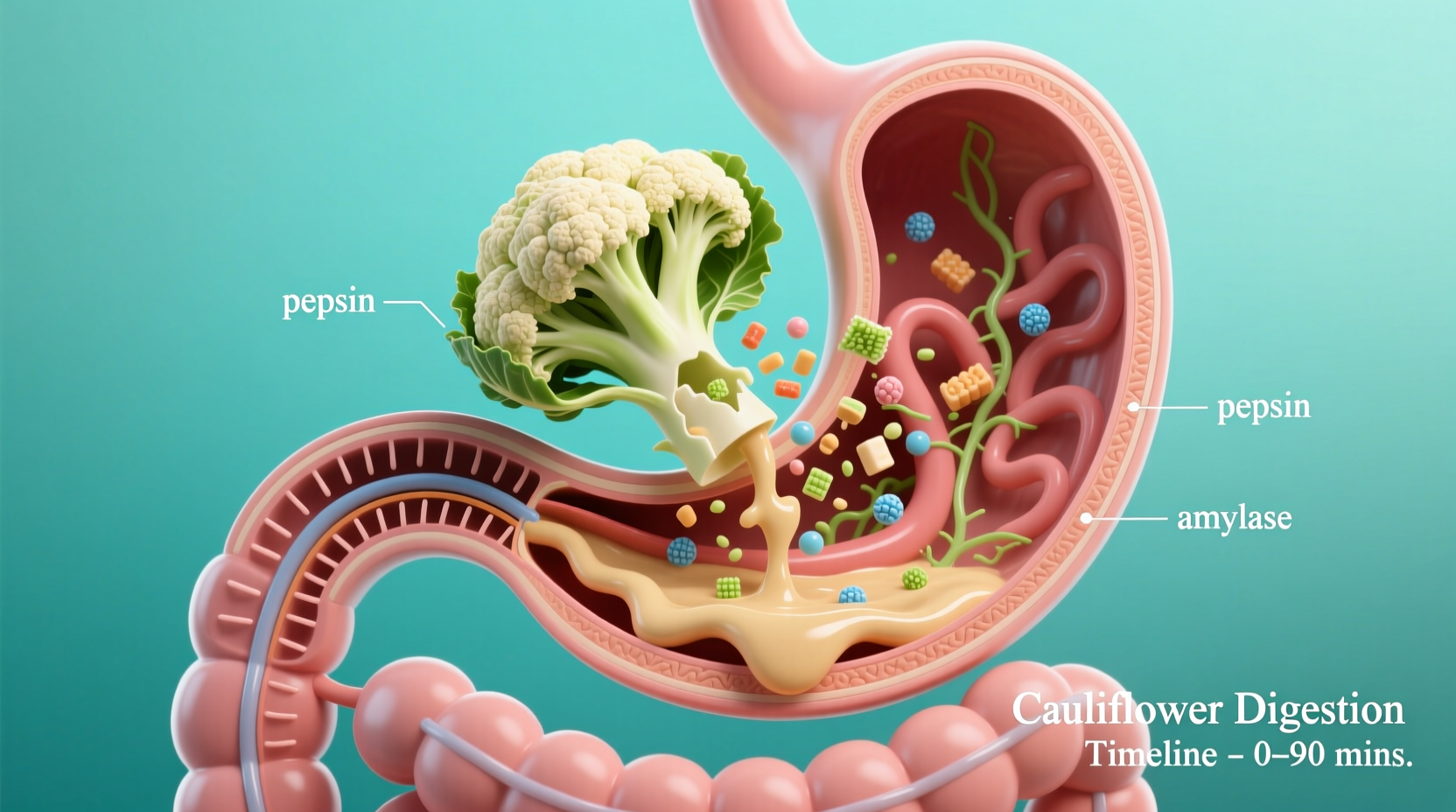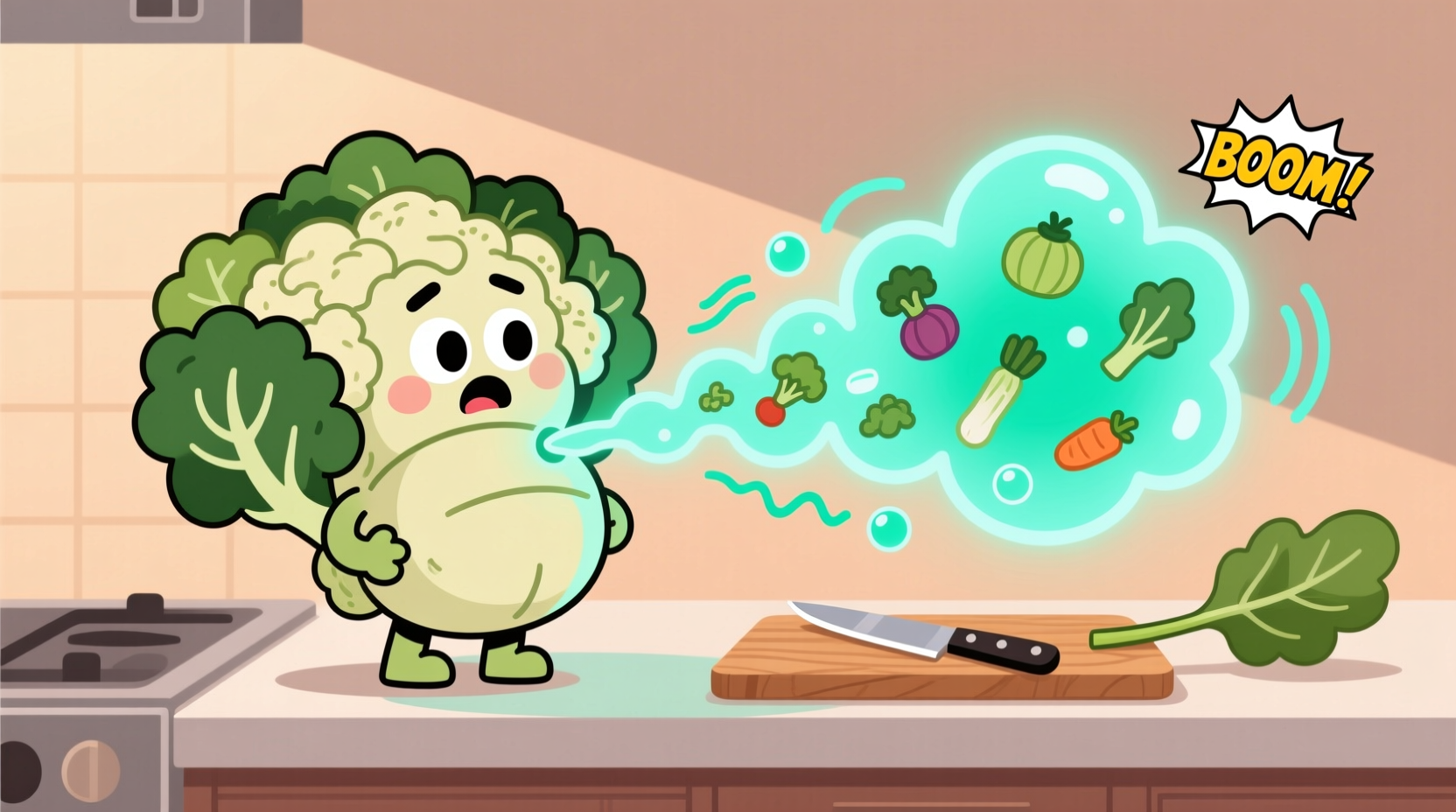Ever wonder why cauliflower sends your digestive system into overdrive? You're not alone. This cruciferous vegetable contains complex carbohydrates that your body can't fully break down, leading to increased gas production. But understanding the science behind why cauliflower causes farts empowers you to enjoy this nutrient-packed food without embarrassment.
The Science Behind Cauliflower and Gas Production
Cauliflower contains significant amounts of raffinose, a complex sugar your small intestine lacks the enzyme to digest. When these undigested carbohydrates reach your large intestine, gut bacteria ferment them through a process called hydrogenogenesis, producing gases like hydrogen, methane, and carbon dioxide.
| Cruciferous Vegetable | Raffinose Content (per 100g) | Typical Gas Production Level |
|---|---|---|
| Cauliflower | 0.7g | Moderate-High |
| Broccoli | 0.8g | High |
| Cabbage | 0.6g | Moderate |
| Brussels Sprouts | 1.1g | Very High |
This fact comparison table from the National Institutes of Health shows how cauliflower compares to other gas-producing vegetables. While not the highest offender, its combination of raffinose and fiber makes it particularly noticeable for many people.
Your Digestive Timeline with Cauliflower
Understanding the cauliflower digestion timeline helps anticipate and manage gas production:
- 0-30 minutes: Cauliflower enters your stomach where initial breakdown begins
- 1-2 hours: Moves to small intestine where limited digestion occurs (your body lacks alpha-galactosidase enzyme)
- 2-4 hours: Undigested components reach large intestine
- 4-8 hours: Gut bacteria ferment raffinose and fiber, producing gas
- 8-12 hours: Peak gas production typically occurs
This timeline from American Gastroenterological Association explains why you might experience increased flatulence the morning after eating cauliflower dinner.

Practical Solutions to Reduce Cauliflower Gas
Don't eliminate this nutritious vegetable from your diet—implement these science-backed strategies instead:
Smart Preparation Techniques
- Soak before cooking: Submerge chopped cauliflower in salted water for 30 minutes to reduce raffinose content
- Thorough cooking: Boiling or steaming breaks down some complex carbohydrates (avoid raw consumption if sensitive)
- Add digestive aids: Cook with caraway seeds, ginger, or fennel to help neutralize gas production
Dietary Adjustments for Cauliflower Lovers
- Start small: Begin with 1/4 cup portions and gradually increase over weeks to build digestive tolerance
- Pair wisely: Eat cauliflower with easily digestible foods like rice or potatoes, not with other high-gas foods
- Consider enzyme supplements: Alpha-galactosidase supplements (like Beano) taken before meals can help break down raffinose
When Cauliflower Gas Signals Something Serious
While cauliflower farts are normal for most people, certain symptoms warrant medical attention. The Mayo Clinic identifies these red flags:
- Severe abdominal pain accompanying gas
- Blood in stool
- Unintentional weight loss
- Symptoms persisting beyond 24 hours after eating cauliflower
- Gas accompanied by vomiting or fever
If you experience these symptoms consistently with cauliflower or other foods, consult a healthcare provider to rule out conditions like irritable bowel syndrome (IBS), small intestinal bacterial overgrowth (SIBO), or food intolerances.
Building Long-Term Digestive Comfort
Developing a healthy gut microbiome reduces cauliflower digestion problems over time:
- Maintain consistent cauliflower consumption at gradually increasing amounts
- Incorporate probiotic-rich foods like yogurt, kefir, and sauerkraut
- Stay well-hydrated to help move fiber through your system
- Consider digestive enzyme supplements during initial adaptation period
Research from Nature Scientific Reports shows that consistent exposure to cruciferous vegetables over 4-6 weeks allows your gut microbiome to adapt, significantly reducing gas production while maintaining nutritional benefits.
Enjoy Cauliflower Without the Embarrassment
Understanding why cauliflower causes gas transforms your relationship with this superfood. By implementing proper preparation techniques, adjusting portion sizes gradually, and giving your digestive system time to adapt, you can enjoy cauliflower's impressive nutritional profile—including vitamins C and K, folate, and cancer-fighting compounds—without the social discomfort. Remember that some gas production indicates a healthy, active gut microbiome doing its job.











 浙公网安备
33010002000092号
浙公网安备
33010002000092号 浙B2-20120091-4
浙B2-20120091-4